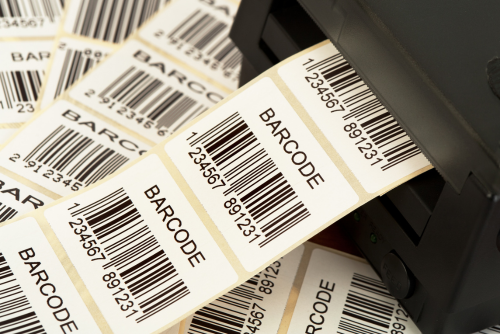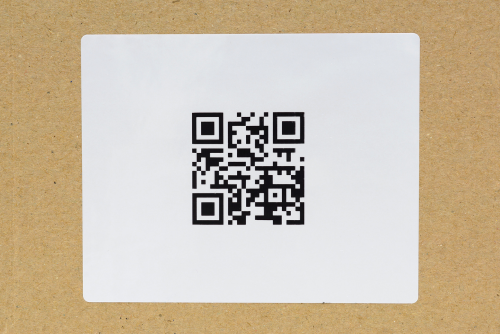In the world of automated data capture, barcodes play a pivotal role in streamlining operations across various industries. Barcode scanners, the devices used to read these codes, come in two primary types: 1D and 2D scanners. Understanding the differences between these two can help businesses choose the right technology to enhance efficiency and accuracy. Here’s a breakdown of the key differences between 1D and 2D barcode scanners.
1D Barcode Scanners
1D barcodes, also known as linear barcodes, consist of a series of vertical lines of varying widths and spaces. Commonly seen on retail products, they encode information in a single horizontal line. We offer a wealth of 1D barcode scanners in both corded and wireless models.

How 1D Scanners Work:
1D scanners use a laser or LED light to scan the barcode. The light reflects off the barcode and is interpreted by a photodiode, which converts it into an electrical signal that represents the data encoded in the barcode.
Advantages of 1D Scanners:
Simplicity and Speed: 1D scanners are generally faster at reading linear barcodes due to their straightforward design.
Cost-Effective: These scanners are typically less expensive than their 2D counterparts.
Wide Availability: Due to their long presence in the market, 1D scanners are widely available and compatible with many existing systems.
Limitations of 1D Scanners:
Limited Data Capacity: 1D barcodes can only store a small amount of information, usually just an identifier that references data stored elsewhere.
Orientation Dependency: The scanner must align with the barcode horizontally to read it correctly, which can slow down the scanning process in some scenarios.
2D Barcode Scanners
2D barcodes, such as QR codes and Data Matrix codes, encode data both horizontally and vertically. This allows them to store significantly more information than 1D barcodes, including text, URLs, and other data types.

How 2D Scanners Work:
2D scanners use imaging technology, similar to a camera, to capture the barcode. They take a picture of the entire barcode and then use software to decode the information stored within the two-dimensional pattern.
Advantages of 2D Scanners:
High Data Capacity: 2D barcodes can store much more information than 1D barcodes, making them ideal for complex data needs.
Versatility: 2D scanners can read barcodes from any orientation, improving speed and efficiency in various applications.
Enhanced Functionality: These scanners can read barcodes from screens and surfaces with poor print quality, expanding their usability.
Limitations of 2D Scanners:
Cost: 2D scanners are generally more expensive than 1D scanners due to their advanced technology.
Complexity: The technology used in 2D scanners is more complex, which can require more sophisticated maintenance and support.
Choosing the Right Scanner for Your Needs
Consider the following factors when deciding between 1D and 2D barcode scanners:
Data Requirements: If you need to encode a large amount of information directly within the barcode, 2D scanners are the way to go.
Environment and Application: For high-speed, repetitive tasks like retail checkout, 1D scanners might suffice. However, for applications requiring scanning from various angles or reading from screens, 2D scanners offer superior performance.
Budget: If budget constraints are a primary concern, 1D scanners provide a cost-effective solution.
Future-Proofing: As businesses increasingly adopt digital and mobile technologies, 2D scanners offer more versatility and compatibility with future needs.
The Best of Both Worlds
To meet the diverse needs of modern businesses, hybrid barcode scanners that can read both 1D and 2D barcodes have become increasingly popular. These versatile devices combine the simplicity and speed of 1D scanning with the advanced capabilities of 2D scanning. Hybrid scanners offer flexibility, allowing businesses to handle a wide range of scanning tasks with a single device. This versatility makes them ideal for environments like retail, warehousing, and logistics, where both types of barcodes may be encountered. By investing in hybrid scanners, businesses can future-proof their operations, ensuring they are equipped to handle evolving barcode technologies and applications.
Conclusion
Understanding the differences between 1D and 2D barcode scanners is essential for selecting the right technology for your business. 1D scanners offer simplicity and cost-effectiveness, ideal for straightforward, high-speed scanning tasks. On the other hand, 2D scanners provide higher data capacity, versatility, and advanced functionality, making them suitable for more complex applications. By assessing your specific needs and operational context, you can choose the right scanner to enhance your business’s efficiency and accuracy.
Why Choose Bar Code Data?
At Bar Code Data Ltd., we offer comprehensive software solutions backed by over 30 years of industry experience. As barcode experts, we can ensure that your business receives the best tools to operate efficiently. For expert advice and a wide range of barcode scanning solutions, contact Bar Code Data today.